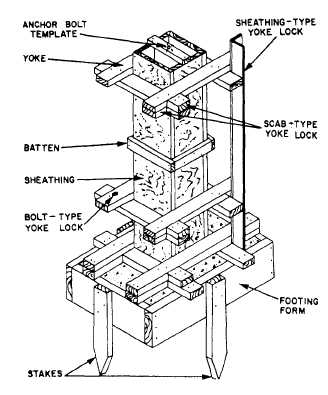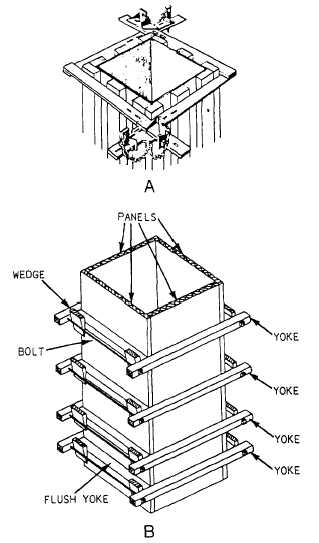impregnated with waterproofing compound. Figure 7-6 shows an assembled column and footing form. After constructing the footing forms, build the column form sides, and then nail the yokes to them.
Figure 7-7 shows a column form with two styles of yokes. View A shows a commercial type, and view B shows yokes made of all-thread bolts and 2-by material. Since the rate of placing concrete in a column form is very high and the bursting pressure exerted on the form by the concrete increases directly with the rate of placing, a column form must be securely braced, as shown by the yokes in the figure. Because the bursting pressure is greater at the bottom of the form than it is at the top, yokes are placed closer together at the bottom.
The column form should have a clean-out hole cut in the bottom from which to remove construction debris. Be sure to nail the pieces that you cut to make the clean-out hole to the form. This way, you can replace them exactly before placing concrete in the column. The intention of the clean-out is to ensure that the surface which bonds with the new concrete is clear of all debris.

Figure 7-6.-Form for a concrete column.

Figure 7-7.-Column form with scissor clamp (View A), and yolk and wedge (View B).
Walls
Wall forms (figure 7-8) may be built in place or prefabricated, depending on shape and desirability of

Figure 7-8.-Form for a concrete wall.
Continue Reading